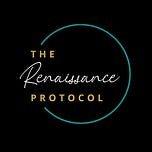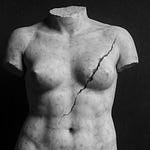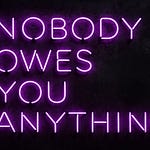Most people don’t quit their run because of the run.
They quit because the shoes are in the wrong cabinet.
Top shelf. Behind the winter boots. You have to move two items, something will fall, and by the time your brain has simulated this obstacle course, it has already whispered: not today.
We usually blame discipline. But is it really discipline? The culprit is embarrassingly small: a missing charger, a dead laptop, shoes in the attic. One irritating step, and that energy-hoarding beast in your skull calls it a day.
This is the physics of friction applied to human behavior. Once you see it, you can’t unsee it.
And once you can’t unsee it, quitting the wrong battles becomes much easier.
Your Brain Is a Cheapskate (And That’s Not a Bug)
Like every living system, we are wired for one thing: conserve energy.
Every decision costs cognitive resources. Every initiation moment — every “startup” — feels expensive. Anything requiring “extra” activation gets flagged as unnecessary expenditure.
We all know the theory: healthy habits promise compounding returns — longer life, more muscle, smaller belly, fewer surgeries, less pain. You’d think that alone would motivate change.
But your brain doesn’t calculate in decades.
It calculates in seconds.
And right now, that cabinet friction with your running shoes feels like a threat to the system.
This isn’t weakness. It’s rational energy economics operating on incomplete information.
Every doctor has a truckload of stories where patients choose short-term comfort over long-term consequences. Instant gratification often wins, not because of ignorance, but because of friction stacked at every behavioral step.
It’s why a patient with a lifestyle-induced lower-leg amputation might be smoking outside the hospital entrance the next day. Incomprehensible — until you look at the layers of friction in their life that make their choices feel rational, without actually being rational.
Physics has known this forever: static friction is highest at the start. Once something moves, momentum is cheap. Your body mirrors it — initiating muscle activation costs more effort, maintaining it costs far less. Even your neural circuits follow the same pattern. The first sentence you write? Maximum cognitive load. The tenth? Flow state.
This is why “just do two minutes” works when it works. You’ve paid the activation toll. Quitting now costs more energy than continuing.
But productivity gurus still praise willpower as fuel.
Willpower is wet matches in a storm.
It sparks, then dies.
Architecture is what holds.
Why Surgeons Thrive on Low Friction
In the operating room, nothing is left to chance.
Instrument setup, team positioning, lighting, temperature — everything set up to minimize friction. No “where’s the clamp?” mid-incision.
I don’t want to decide where the scalpel is. Ideally, it finds my hand because the environment was designed for that outcome.
We eliminate microdecisions because in surgery, as in every other field, decision fatigue has a cost.
Contrast that with daily life:
High-friction writing:
Laptop in another room, password expired, forty tabs open, notifications bombarding your senses.
Low-friction writing:
A dedicated device, pre-loaded doc, single purpose, specific chair. Nothing else is possible.
One demands intense amounts of willpower every time.
The other requires one structural decision upfront.
Identifying these friction points — or bottlenecks — is central to leadership in any field.
The art isn’t fixing every bottleneck.
It’s fixing the ones that actually constrain flow. The ones with a clear return on effort. If fixing the friction costs more than the friction itself — don’t fix it.
Some friction doesn’t matter if the workflow doesn’t matter.
Recently, we noticed insufficient quality in our electronic health-record coding. A friction analysis revealed a maze of buttons and forms that required a precise order. The solution was a semi-automated click-guided questionnaire that moved the doctor through the process without friction — and now coding in that area is nearly flawless.
The Part Where You’re the Problem
Here’s the uncomfortable truth: sometimes the friction is real, but the reason it’s there is buried deeper. Because often, we built it ourselves.
If you say you want to write but never charge your laptop, that’s not an accident.
If you “plan to run” but your shoes keep migrating to the attic, that’s not inconsistency.
It’s avoidance dressed as nuisance.
We construct elaborate obstacle courses around things we don’t truly want. Call it self-sabotage, call it subconscious protection — the result is the same.
You’re not doing what you said you’d do. Not because you can’t, but because you secretly don’t want to.
I’ve done this. I have a trove of buried startups, abandoned languages, countless projects rotting in digital graveyards. Each one teaching the same lesson:
When I truly want something, I remove friction. When I don’t, I build excuses and call them obstacles.
I’ve learned that this is okay — as long as I admit it to myself. That I don’t want it anymore. That I said yes because I didn’t have the guts or experience to say no.
The hardest move in personal growth is also the most liberating:
Honesty with yourself.
Don’t want it? Stop saying you do. Kill the guilt, let it die.
Do want it? Stop expecting future-you to be a hero. Remove every barrier you can.
Both demand truth.
Only one demands courage.
The Three-Audit Protocol
Think of yourself as the CEO of your own life. Not in the hustle sense — in the self-mercy sense. Helping future-you spend energy where it actually matters.
Run your frictions through these filters:
1. The Relevance Audit
Is this workflow even important?
Some bottlenecks don’t deserve your energy. Fix only the constraints that shape your life.
2. The Honesty Audit
If friction keeps recurring, ask: Do I truly want this?
If no, drop it. This single move frees more capacity than any productivity system.
3. The Design Audit
If you do want it, map the real chain from intention to action.
Not “go to gym.”
The actual path:
Find clothes → check if clean → locate water bottle → find keys → drive → park → change
Count every bail-point.
Then eliminate the first three:
Lay out clothes.
Pre-pack the bag.
Put the keys on top.
Stack your phone on the keys.
You haven’t increased discipline.
You’ve decreased activation energy.
One Example From the Mess
I wanted to draw more again after an on-and-off relationship with it. Over almost ten years — zero drawings.
The friction diagnosis was simple: it was a solo project competing with family time.
The solution was just as simple: my son loves drawing too. So we started a joint online class. We put it on the family calendar. Shared accountability, shared joy, and suddenly I had drawing time and time with my kid.
One structural decision.
Problem solved.
This is core to how I manage my different renaissance identities — surgeon, researcher, father, musician, writer, artist. I’m constantly hunting friction thieves.
Your Move
Pick one area this week. Work. Health. Parenting. Creativity.
Where’s the quiet friction stealing disproportionate energy?
Maybe it’s your running shoes in your cabinet, maybe it’s something bigger.
Remove one obstacle today and watch the stream flow again.
If you’re willing to share:
What’s the friction point you’re eliminating next?
Hit reply or post it below.
Your insight might unlock mine or someone else’s.
To more in life,
Nicco










